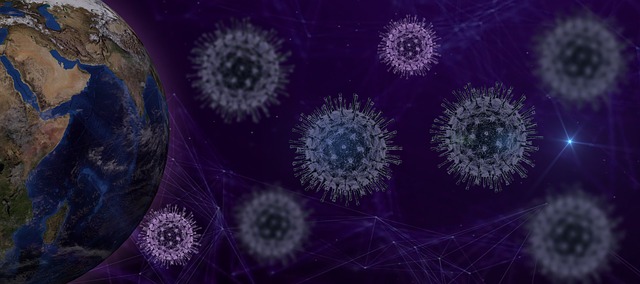Summary Current vaccines against SARS-CoV-2 substantially reduce mortality , but protection against infection is less effective. Improving immunity in the respiratory tract, through mucosal vaccination, can provide protection against infection and minimize viral spread. Here, we report testing of a subunit vaccine in mice , consisting of the SARS-CoV-2 Spike protein with a TLR2-stimulating adjuvant (Pam2Cys), administered to mice parenterally or mucosally. Both vaccination routes induce substantial titers of neutralizing antibodies (nAb), however, mucosal vaccination generates only anti-Spike IgA, increases nAbs in serum and airways, and increases pulmonary CD4+ T cell responses. TLR2 is expressed in respiratory epithelia and immune cells. Using TLR2-deficient chimeric mice, we determined that expression of TLR2 in either compartment facilitates early innate responses to mucosal vaccination. In contrast, TLR2 on hematopoietic cells is essential for optimal antigen-specific responses localized in the lung. In K18-hACE2 mice, vaccination provides complete protection against disease and sterilizes pulmonary immunity against SARS-CoV-2, with a short-term non-specific protective effect of mucosal Pam2Cys alone. These data support mucosal vaccination as a strategy to improve protection in the respiratory tract against SARS-CoV-2 and other respiratory viruses. |
Comments
Researchers from the Centenary Institute and the University of Sydney have developed a new nasal vaccination strategy that induces potent lung immunity and protection against the SARS-CoV-2 coronavirus.
The new vaccine approach was successfully tested in mice and has the potential to be a powerful tool to improve protection against COVID-19 infection and minimize ongoing viral spread.
Made up of the SARS-CoV-2 spike protein and an adjuvant called Pam2Cys (a molecule that helps stimulate a stronger immune response in the body), which was developed by Professor Richard Payne, an NHMRC researcher in the Faculty of Science from the University of Sydney, the new vaccine was administered simply by inhaling through the nose. It elicited substantial levels of neutralizing antibodies and increased T cell responses in the lungs and airways of the mice tested.
The study’s lead author, Dr Anneliese Ashhurst, a researcher at the University of Sydney’s Faculty of Medicine and Health and the Centenary Institute, said that while the current COVID-19 vaccines are critical, there were some limitations, including the decline in immunity after vaccination and infection, combined with the impact of the evolution of new viral variants.
“Current vaccines against SARS-CoV-2 substantially reduce mortality and severe disease, but protection against infection is less effective. Vaccinated people still get COVID-19 and can spread the infection, so breakthrough infections continue to occur,” Dr. Ashhurst said.
“To stop viral spread and prevent this virus from mutating, we need a new vaccine approach that blocks the transmission of COVID-19,” he said.
In the mouse study, the new vaccine was administered nasally, making its way through the respiratory tract, adhering to tissues in the nasal cavity, airways and lungs. Tests showed the generation of high levels of protective antibodies in the airways and increased T cell responses in the lungs (T cells help destroy cells infected by SARS-CoV-2). Significantly, none of the vaccinated mice were infected with COVID-19.
“Our vaccine differs from most current COVID-19 vaccines in that it allows an immune response to be generated directly in those areas of the body that are likely to be the first point of contact for the virus: the nose, respiratory tract and lungs. . This may help explain the effectiveness of the vaccine,” Dr Ashhurst said.
The study’s lead author, Emeritus Professor Warwick Britton AO, director of the Centennial Institute’s Tuberculosis Research Programme, said the new vaccine strategy could play a key role in the fight against many diseases.
“Our vaccination findings have shown exciting potential in preclinical studies, improving protection against SARS-CoV-2 infection. “The approach developed here could help break the cycle of COVID-19 infection and will likely influence future studies involving the coronavirus vaccine,” Professor Britton said.
He added that adapted versions of the new nasal vaccine could also potentially be applied to other viral or bacterial respiratory diseases such as influenza, bird flu, SARS and MERS.
The study was published in the prestigious journal Nature Communications .
















